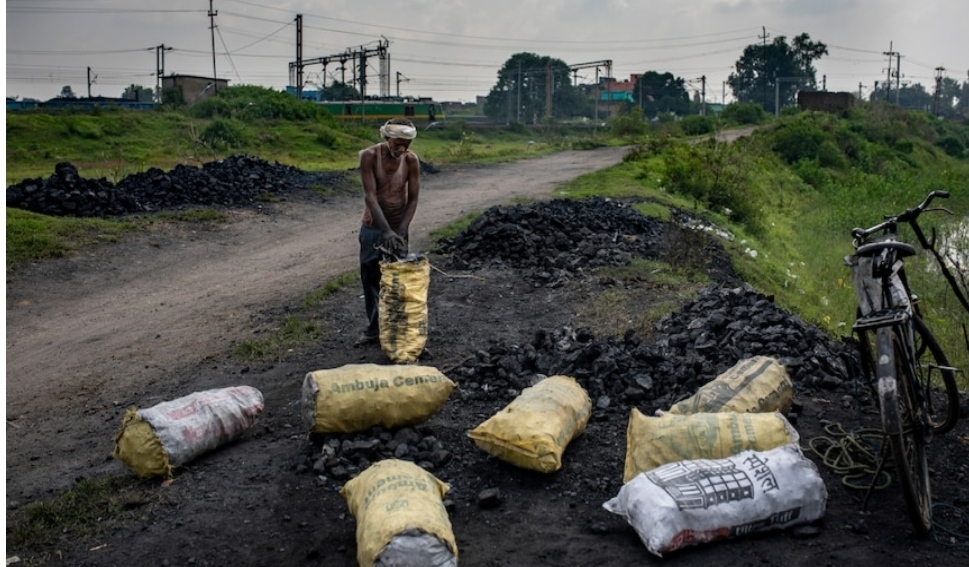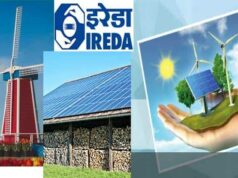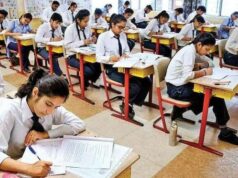Analysis of the most faulty and weird kind by an “Uninformed” Reporter

One Mr Daniel Mercer, an Energy Reported is very worried about the “poor Indians “, which he need not be but instead should go after his own Government for the uplifting of the population who are on the threshold of poverty.
With a population of almost 1.4 billion now India will be soon overtaking China as the most populous country in the world. However unlike the ageing population of China and most of the rest of the world, Indian population is very young and vibrant. We Indians now also look at our population as an asset and not as a burden.
No wonder, India has already kicked out Britain from the position of fifth largest economy ( US $ terms ) and moved into that position. This is no mean achievement, the British had looted 45 Trillion American dollar worth wealth from India between 1747 to 1947 and transferred to their poverty ridden island state. So just in 75 years, India has not only made up most of the loss but also turned the tables on not so United Kingdom. In fact in terms of PPP ( purchasing power parity ) which is the true indicator of Economy, India is already the third largest World Economy after USA and China.
Mercer talks about the United Nations’ Millennium Development Goals report which says that 84 per cent of Indians lived on less than $US6.85 a day in 2019. Firstly this figure of 84 % has been conjured from thin air, a work in which such people are experts. Secondly What these half educated Analysis makers fail to understand is that with 6.85 US$ ie roughly INR 550 per day an Indian worker is able to feed a family of 4 and still save a few rupees. The present Government of India is working to at least triple this income at the fastest speed possible and by all parameters seems to be succeeding quite well. Whereas today an American or an Australian cannot even buy a large sized burger for USD 7.
Thirdly, Daniel Sahib in a burst of charity says that even if the line is drawn lower, there are still 80 million people eking out an existence on no more than $US1.25 a day. Well, here again Daniel, you are off the mark by a wide figure. In 2011 itself according to United Nations Millennium Development Goals (MGD) programme, India had already achieved the target of reducing poverty by half, with 24.7% of its 1.2 billion people living below the poverty line or having income of less than $1.25 a day. By 2015 this figure was down to 23.5% and today it is tending below 20%. This remains a huge figure but we are determined to eradicate it completely in a few years.
The successful control of Wuhan Virus and the rapid vaccination of such a huge population now gives out the true picture of India. The country also exported a huge quantity of vaccine to other friendly countries who needed it most. The hollowness of some of the UN or motivated Western research reports come out, when one-sided WORLD HUNGER INDEX places India at a very low position but when India decides to ban export of rice / wheat, the same set of organizations start howling and threaten action at WTO !!!!
India is growing by leaps and bounds. Virtually one Singapore is being created every few years within this vast country. So no wonder there is insatiable need for energy to develop, this means its demand for oil and coal is set to last for decades or at least till the time India’s indigenous Thorium based Nuclear fast breeder reactors move from experimental stage to Commercial stage. The West has simply refused to part with atomic technology and so the Fast Breeder Reactor is moving ahead at a slower pace and it’s taking time. Meanwhile demand for electricity in India is soaring and thermal coal still remains more valuable than ever.
Though India has moved ahead quite a bit on the renewable energy front too – hydro, Wind and Solar. By mid 2022 the combined installed capacity of renewable energy has reached 163 GW ( Solar 59.34 GW, Hydro 51.73 GW, Wind 41.2 GW, rest others ). India on its own has set a target to reduce the carbon intensity of the nation’s economy by less than 45% by the end of the decade, achieve 50% cumulative electric power installed by 2030, and achieve net-zero carbon emissions by 2070. 59 solar parks of aggregate capacity 40 GW have been approved in India. The world’s largest renewable energy park of 30 GW capacity solar-wind hybrid project is under installation in Gujarat. Wind Energy has an off-shore target of 30 GW by 2030 with 3 potential sites identified
Low-carbon technologies could create a market worth up to INR 640000 Crore in India by 2030. India has been ranked amongst top 5 countries in the world, and the best among the G20 countries, based on its Climate Change performance. India‘s target is to produce 5 MT of green hydrogen by 2030. Green Hydrogen target is set at India’s electrolyzer manufacturing capacity is projected to reach 8 GW per year by 2025. The cumulative value of the green hydrogen market in India could reach $8 bn by 2030 and India will require at least 50 gigawatt (GW) of electrolysers or more to ramp up hydrogen production.
The Central Budget for2022 had allotted additional allocation of INR 19500 Crore for solar PLI Scheme. Even in its giant Thermal Power Stations 5-7% biomass pellets will be co-fired in thermal power plants, saving 38 MMT of carbon dioxide annually.
Mercer should be fully aware that India is one of the world’s biggest producers of coal, yet demand outstrips local supply. So no wonder they started looking left and right and by 2010 Indian interests began eating top dollar for a coal mine in Australia whose owner had gone bust.
The conglomerate Lanco Infratech paid out a sum of INR 6000 Crores to buy the Griffin Coal mine from a fallen business empire. The Lanco was backed by India’s largest private bank ICICI, worth INR 800000 Crores giant with a loan book worth about INR 8000000 Crores. The plan was to export up to 20 million tonnes of Collie coal to the subcontinent. In spite of knowing that it was already a failed mine, it was accepted by Lanco, and the Govt of India, that was keen to show its mark on the stage of global energy trading. No wonder in 2022, the OPEC, the Russians, the Iranians and even the Americans are selling their oil to India at the lowest prices possible. They know that if India stops buying oil from any one of them or reduces its consumption ( India is quite capable of doing it ) then the oil producers will be in doldrums.
Now coming back to Griffin Mines located South of Perth, it is effectively landlocked. Unlike the eastern states, it has no railroads to ports, Thus the coal industry here was effectively bound by the domestic market. So Lanco first needed to invest billions building the infrastructure required to handle the export. In the meantime, the company was essentially reliant on Griffin’s existing domestic business. So instead of export presently it had to ensure the coal supplies desperately needed to keep the local power system running and the lights on.
Griffin had been locked into long-term contracts that required the miner to sell its coal for a price that barely covered its costs of production. Once expenses such as interest on Lanco’s debt and bills for maintenance and new machinery were factored in, Lanco went under loss. By 2017 the ownership of Griffin Mines got transferred to the lenders that is the ICICI bank. Instead of cutting its losses, ICICI simply dug in and made a bad situation even worse.
The historic Griffin Coal mine was finally placed in receivership in September this year. When receivers were finally appointed to the mine to head off a takeover attempt by Griffin’s biggest customer, the Bluewaters power station. By now almost INR 12000 Crores was owed by the Company to the lenders and suppliers. Out of this around almost INR 10800 crores have to be paid to ICICI. However ICICI is not worried being a secured creditor, and is first in line to be paid from whatever money can be raised by selling the mine.
This fact is what many in the World either just cannot fathom or they cannot digest. It is not palatable to many that an Indian bank can have such huge “ debts “ and still not be worried. Griffin Mines closure has become a threat to Western Australia’s power supply.
Hope against hope many multinationals / Australian Companies are that hoping that ICICI will try to cut its losses and just sell off the debt at throw away price. This is not happening. That is why there articles harping on “ Indian bank plunging more than a billion dollars into a hopeless bet on foreign soil while hundreds of millions of Indians endure life below the poverty line.
Efforts to get ICICI to talk about, or even acknowledge, the mess at Griffin has proved futile.A few Liberal Members of Parliament are very unhappy that ICICI has agreed to further lend INR 4800 Crores to Griffin through an obscure third party. They seemed to be more worried that till date, no public disclosure has been made by the bank about the colossal waste of money on a doomed Australian coal mining operation. Also the fact that all of this hasn’t triggered more questions in India, where ICICI has only just dealt with a major scandal involving its now ex-CEO, is deafening in its silence.
Now if Griffin Mines closes down, what most Australians should be worried about is that it will take down Western Australia’s main electricity system, apart from the jobs. However the analyst seem to be worried about the “ poor “ Indians !!! The real losers, as they depressingly “believe” in these circumstances, are likely to be ordinary Indians, far too many of whom are mired in extreme poverty.
We Indians say that we are fully aware of the whole thing. Do not worry we “poor” are fully capable of sustaining your system.After now India is adding additional INR 8000000 crores (one USD trillion dollar ) every year to its GDP which is already nearly worth 4 trillion in USD terms.



